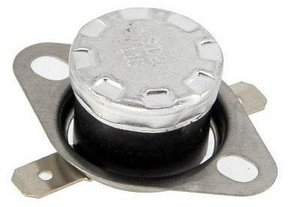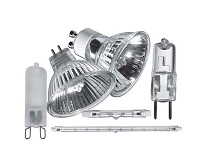- The device of the magnetron - the main component
- Thermal cut-off and why it is needed
- Purpose of the microwave oven fans
- Microwave Protection and Interlock System
- The control unit - the brain of the device
- Entertaining video with a story about the principle of operation of microwave ovens
Microwave ovens (microwave ovens) have long been the most common household appliance, with which you can very quickly defrost food, heat up already cooked food or cook a dish according to the original recipe, and even sanitize kitchen sponges and cloths that do not contain metal.
The presence of a convenient, intuitive interface and multi-level protection even allow a child to cope with the management of such a complex and high-tech device, like a microwave. Some dishes can be quickly and easily prepared by the built-in programs. BUT possible malfunctions It can be eliminated by doing.
Heating products placed in the microwave chamber, occurs due to exposure to them of powerful electromagnetic radiation of the decimeter range. AT household appliances apply a frequency of 2450 MHz. Radio waves of such high frequency penetrate into the depths of products, and act on polar molecules (mostly water in products), forcing them to constantly move and line up along the lines of force of the electromagnetic field.
Such a movement raises the temperature of the products, and the heating goes not only outside, but also to the depth to which radio waves penetrate. In household microwave ovens, the waves penetrate 2.5-3 cm deep, they heat the water, and that, in turn, the entire volume of products.
The device of the magnetron - the main component
Radio waves with a frequency of 2450 MHz are generated by a special device - the magnetron , which is an electrovacuum diode. It has a massive copper cylindrical anode round in cross section and divided into 10 sectors with the same walls of copper.
In the center of this design is a rod cathode, inside of which there is a filament. The cathode serves to emit electrons. Along the ends of the magnetron are powerful ring magnets, creating a magnetic field inside the magnetron, necessary for the generation of microwave radiation.
A voltage of 4000 volts is applied to the anode, and a 3 volt voltage is applied to the filament. There is an intense emission of electrons, which are picked up by a high-voltage electric field. The geometry of the resonator chambers and the anode voltage determine the generated frequency of the magnetron.
The energy is removed using a wire loop connected to the cathode and brought out into the radiator-antenna. From the antenna microwave radiation enters the waveguide, and from him into the chamber of the microwave. The standard output power of magnetrons used in household microwaves is 800 watts.
If cooking requires less power, this is achieved by turning the magnetron on for a certain period of time, followed by a pause.
To obtain a power of 400 W (or 50% of the output power), you can turn on the magnetron for 5 seconds for a 10-second interval and turn it off for 5 seconds. In science, this is called pulse width modulation .
During operation, the magnetron emits a large amount of heat, so its case is placed in a plate radiator, which, during operation, must always be blown with airflow from the fan built into the microwave. When overheated, the magnetron very often fails, so it is equipped with a protection - a thermal fuse.
Thermal cut-off and why it is needed
 To protect the magnetron from overheating, as well as the grill, which some models of microwave ovens are equipped with, special devices, called thermal fuses or thermal relays , are used. They are available in different temperature ratings indicated on their case.
To protect the magnetron from overheating, as well as the grill, which some models of microwave ovens are equipped with, special devices, called thermal fuses or thermal relays , are used. They are available in different temperature ratings indicated on their case.
The principle of operation of the thermostat is very simple. Its aluminum housing is attached with a flange connection to the place where it is necessary to control the temperature. This ensures reliable thermal contact. Inside the fuse there is a bimetallic plate with settings for a certain temperature.
When the temperature threshold is exceeded, the plate bends and actuates the pusher, which opens the plates of the contact group. Power microwave is interrupted. After cooling, the geometry of the bimetallic plate is restored and the closure of the contacts occurs.
Purpose of the microwave oven fans
The fan is the most important component of any microwave, without which its operation will be impossible. It performs a number of important functions:
- First, the fan blows through the main part of the microwave oven - the magnetron, ensuring its normal operation.
- Second, other components electronic circuit also generate heat and require ventilation.
- Thirdly, some microwaves are equipped with a grill, which is necessarily ventilated and protected by a thermal switch.
- And, finally, in the chamber the prepared products also emit a large amount of heat and water vapor. The fan creates a slight overpressure in the chamber, with the result that the air from the chamber along with the heated water vapor escapes through special ventilation openings.
In the microwave from one fan, which is located at the rear wall of the case and sucks the air outside, a ventilation system is arranged with the help of air ducts, directing the air flow to the magnetron plates, and then into the chamber. The fan motor is a simple single-phase AC.
Microwave Protection and Interlock System
Any microwave oven has a powerful radio-emitting device inside it - a magnetron. Microwave radiation of such power can cause irreparable harm to human health and all living beings, therefore it is necessary to take a number of protective measures.
The microwave has a fully shielded metal working chamber , which from the outside is additionally protected by a metal housing that prevents high-frequency radiation from penetrating to the outside.
The transparent glass in the door has a screen made of metal mesh with a small cell that does not allow outward emission of 2450 Hz, a wavelength of 12.2 cm, generated by the magnetron.
 The issue of energy saving has always been relevant. one of the types lighting fixtures , which greatly help reduce the consumption of electricity in the home, are. To make optimal choice You just need to understand the advantages and disadvantages of each type of such lamps.
The issue of energy saving has always been relevant. one of the types lighting fixtures , which greatly help reduce the consumption of electricity in the home, are. To make optimal choice You just need to understand the advantages and disadvantages of each type of such lamps.
Double switches in view of its features are widely used in the home. How to connect such switches correctly and what you need to know to prevent errors in this case can be found in.
The door of the microwave machine fits tightly to the body and it is very important that this gap retains its geometrical dimensions. The distance between the metal case of the camera and the special groove of the door should be equal to a quarter of the microwave radiation wavelength: 12.2 cm / 4 = 3.05 cm.
In this gap, a standing electromagnetic wave is formed, which has a zero amplitude value exactly at the site where the door fits to the body, so the wave does not propagate to the outside. This is the elegant way to solve the issue of protection against microwave radiation using the microwave waves themselves. This method of protection in science is called a microwave choke.
To prevent the inclusion of a microwave oven with an open chamber, there is a system of microswitches that control the position of the door. Usually there are at least three such switches: one turns off the magnetron, the other turns on the backlight even when the magnetron is not working, and the third serves to “inform” the control unit about the position of the door.
Microswitches are located and configured so that they work only when the working chamber of the microwave is closed.
Microswitches on the door are also often called limit switches.
The control unit - the brain of the device
 Any control unit has microwave oven and it performs two main functions:
Any control unit has microwave oven and it performs two main functions:
- Maintaining a given microwave power.
- Turn off the oven after a specified time has elapsed.
On older models of electric furnaces, the control unit was represented by two electromechanical switches, one of which just set the power and the other the time interval. With the development of digital technology, electronic control units have been used, and now microprocessor-based ones, which, in addition to performing two main functions, can also include many necessary and unnecessary service ones.
- Built-in clocks, which certainly can be useful.
- Power level indication.
- Change the power level using the keyboard (push-button or touch).
- Cooking or defrosting products using special programs, "sewn" in memory of the control unit. This takes into account the weight, and the required power will select the furnace itself.
- Alarms the end of the program selected sound.
In addition, modern models have upper and lower grills, convection function, which also "controls" the control unit.
The control unit has its own power source, which ensures the operation of the unit both in standby and in operating mode. An important component is the relay unit, which commutes on the commands of the power circuit of the magnetron and grill, as well as the circuit of the fan, built-in lamp and convector. The control unit is connected with loops with a keyboard and display panel.
Entertaining video with a story about the principle of operation of microwave ovens
See how easy it is to explain how this amazing device works.


